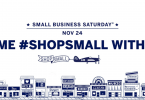Every business owner wants to acquire new customers. Every business owner also knows that his or her potential customers are on Google every day. Yet not every business owner knows how to (or necessarily wants to) fully leverage Google’s renowned advertising platform, Adwords to drive those customers in store. Why?
Google Adwords, (which generates 95% of the internet giant’s yearly revenue) can have the perception of being complicated, labor-intensive, or worst of all, expensive. Admittedly, Adwords isn’t the cheapest medium or the easiest platform to maneuver. However, when Adwords is approached with a focused mindset, small business owners can be wield it to their advantage, whatever the budget.
While you can bid in a variety of ways, we suggest implementing Cost-per-click (CPC) bidding, where you’re charged a small fee for each ad-click based off of a real-time auction system.
The ins-and-outs of Adwords, including the algorithm behind the complex auction system, can be tricky to grasp. But if you’re a small business owner on a budget looking to drive traffic to your website or customers to your store, we’ve provided a few key pointers below that’ll make you a successful Adwords advertiser:
1. Choose the right targeting
Adwords is known for it’s powerful and wide-ranging targeting choices. But the bountiful options can often lead to poor selections in targeting, especially for advertisers on a budget. We suggest the following:
Target only via Google Search, and avoid Search Partners and the Display Network. Search Partners will show your ads on affiliated Google sites, whereas Display Network will show your ads on a host of publisher sites (think of those annoying flashing banner ads that you see on your favorite websites). Google Search, however, will only display your ads when someone explicitly searches for related keywords within Google’s Official Search Engine (google.com).
Use the geographic targeting options to your advantage. If you own a business with a storefront in a certain city or state, it makes sense to make sure that your ads are only showing to people within your relevant location. Furthermore, you can cater your ads to include these city and state specific descriptors, or even provide tailored promotions or offers that speak directly to the specific demographic.
2. Choose the right device types and cater to them
Adwords offers advertisers the ability to segment and target users by device type – this means isolating out mobile, desktop, and tablet users, while serving each audience specific ads and even landing page creatives (if you so wish). In addition to the fact that mobile, desktop, and tablet users may all react differently to the same ad, each also requires specific call-to-actions, depending on what type of response you’re looking to drive.
If you happen to own a storefront (e.g. restaurant, salon or spa, etc.) and are looking to drive bookings, it’s vital to have a prominently displayed phone number on both your ad and landing page. In particular, users searching on mobile devices are likely looking to take immediate action and require a clear path to get in touch. When targeting mobile users, ensure that your phone numbers are click-to-call (C2C) enabled, which will allow your visitors to auto-populate the phone number in their dialer upon a single click.
3. Specify when your ads will show
Day-parting or bid scheduling, allows advertisers to specify what days of the week and hours of the day their ads are available to show. It’s important to cater these hours to when your business is open or when someone is available to respond. Otherwise, these calls and customer requests will fall on deaf ears and your advertising spend will be wasted. Likewise, if there are times of the week where you’re already flooded with traffic, perhaps consider deferring ad spend to times of slower traffic.
Day-parting and bid scheduling also always you to dissect the historic results to gain a better understanding of when people are searching for your keywords, providing foresight into when your business’ busiest times may be – this could affect your hours of operation, staffing, etc.
Furthermore, if you know that your business is slower during certain times of the week, you can offer special promotions via your ads to drive visitors to your website or storefront. Simply make sure that the offer and call to action is clear on both your initial ad and website.
4. Select relevant and well-reasoned keywords
Selecting keywords, or specifying the single words or phrases that will trigger your ads to appear when searched, may be the trickiest part of building a successful Adwords campaign. Most advertisers split keywords into two groups: branded keywords (ones that relate directly to your company) and non-branded or generic keyword (ones that relate to your vertical or industry, but not your company).
Branded keywords are almost always cheaper (up to 90% cheaper in many cases), generally drive higher click-through-rates, and convert to a response better than non-branded keywords. These should be considered your low hanging fruit, ensuring that visitors who are searching for your brand are being captured at each and every opportunity.
Worried that you’re simply cannibalizing traffic to your organic ranking site? Don’t – Google’s studies show that ad clicks, even with a top ranking organic site, can provide up to 50% in incremental clicks that aren’t replaced by organic visits in the absence of ads.
Bidding for non-branded/generic keywords and ranking for them can be far trickier. Our general advice: instead of targeting broader generic ‘head’ terms, which would include [restaurants] or [cafes] or [massage], instead bid for more specific ‘longer tail’ keywords. These would include a combination of your broader ‘head’ terms with specific descriptors such as [restaurants in Atlanta] or [local neighborhood cafes] or [massage deals for couples].
Adwords may seem like a complex and daunting advertising channel, however, by targeting a narrow, relevant audience and utilizing the platform’s powerful suite of ad scheduling tools, you can capture the host of prospective customers that are shopping for your service or product.






Leave a Comment